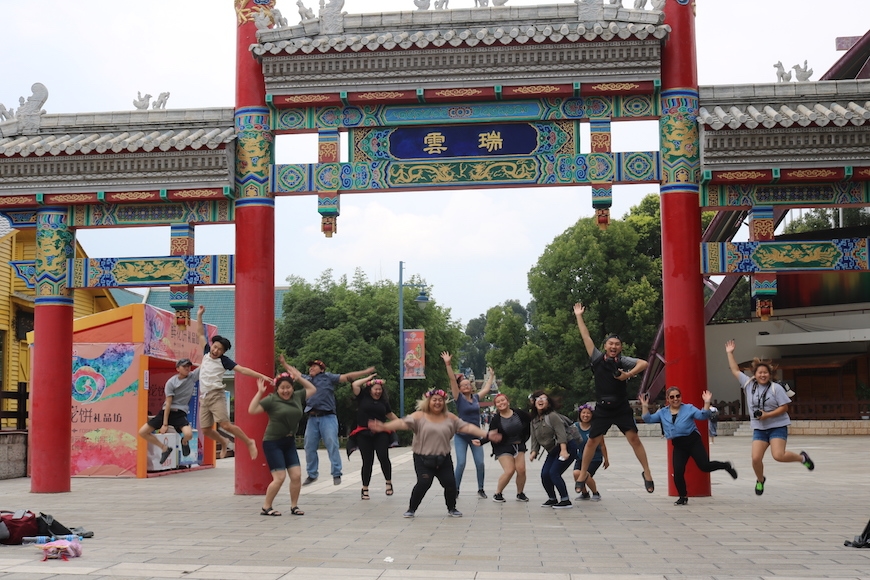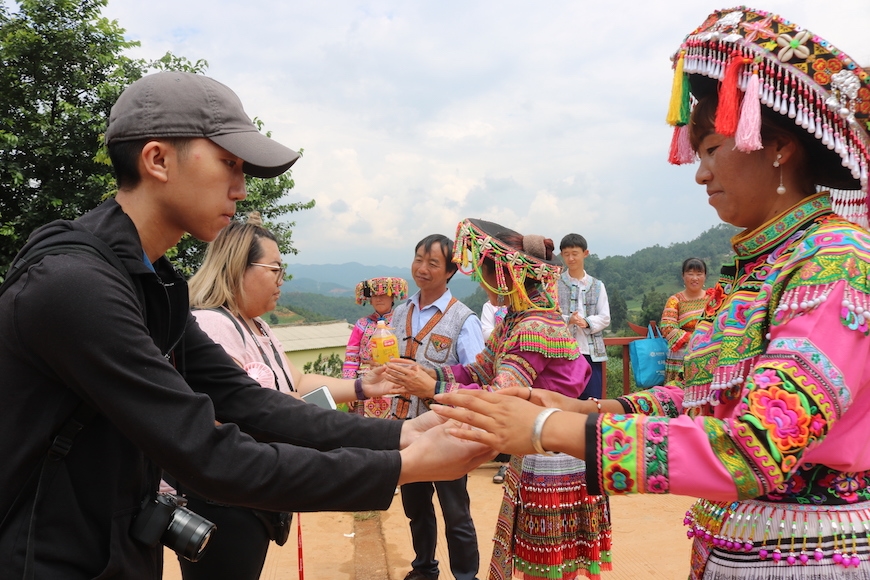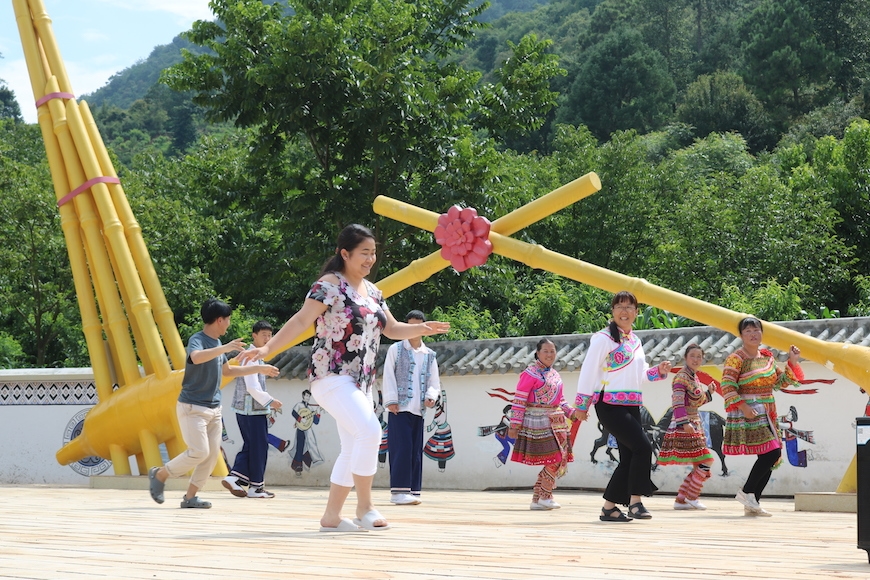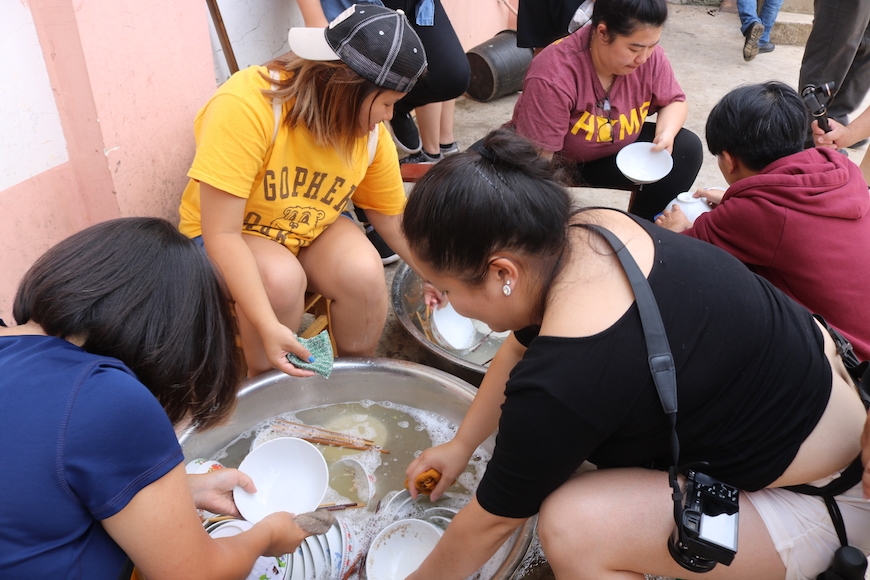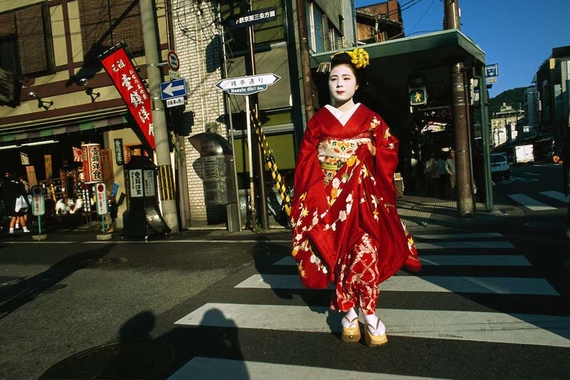Exploring Hmong Culture in China
As one of the few Hmong studies programs in the US, it was monumental for the Department of Asian Languages & Literatures to offer a learning abroad opportunity during summer 2018 that provided students with an immersive language and cultural experience in a Hmong community in Kunming, China.
Unique Programming
The Hmong program is run by two full-time instructors, who work hard to ensure that their students develop an all-encompassing view of Hmong language, culture, and identity. This was the first time that the program has taken students abroad, but the experience was such a success that students from the UMN and community will be invited to travel again in the summer of 2019.
On this trip, Yunnan University hosted the 14-student cohort and instructor. The students stayed in the city of Kunming, known as the city of eternal spring. Students also visited the smaller but similarly bustling Hmong hometown of Wenshan five hours away. They also spent two days with local families at a home stay site nestled in the mountains.
One focus of the trip was to gain an understanding of the ways in which Hmong culture historically has been intertwined with Chinese culture while remaining culturally Hmong. Students lived as locals and compared their different experiences as they traveled from cities to towns to villages. It was more than just observing communities: “It was a cultural exchange. If they sang for us, we were fully prepared to sing to them,” explains Bee Vang-Moua, the director of the program. Students effectively became members of the communities they were visiting, surprising both themselves and the locals by the extent and natural ease of the relationship.
Changing the Narrative of Hmong Identity
“The Hmong know that we’re from China, but the narrative really stops in Laos,” shares Vang-Moua.
She describes Hmong identity as being defined by historical refugee experience and often imagined as a poor, hill-tribe people without a clear sense of roots because families were scattered when they arrived in the US. These roots are important to highlight, but one goal of the trip was to move beyond those images.
The visit to Kunming sparked many questions about identity. Seeing and living the “Hmong way” in China showed students that Hmong and Chinese share some cultural practices. “It helped broaden my understanding of the world and gave me a new perspective, much like paving a new road,” says student Kong Thao, who explains that the trip built a stronger connection to his identity and heritage. Living in various local communities also made him appreciate the opportunities that the US provides, including basic ones like access to clean water. He now has more confidence in his identity and has a clearer picture of his historical roots beyond the US and how they fit within a bigger, historical picture. Thao has a newfound desire to continue traveling, understanding, and embracing other cultures.
The Crossroad of Language & Culture
In China, students discovered a somehow strange yet familiar world that will shape their future. Their experiences also brought the cohort closer together.
Director Vang-Moua hopes to gain more student interest, communal support, and funding to help grow the program and foster new experiences for people at the intersection of their past and future. The department has already begun planning for next summer’s trip to Thailand, which will focus on the historical context of Hmong identity and culture. Students will visit an eerily quiet, abandoned refugee camp on the one hand, and urban successful Hmong businesses on the other. They will reflect at the Mekong river on the tragedy and hope that is a part of the river’s history.
In 2020, the program will return to China to begin the cycle again. Breaking the trip into these two stages creates a comprehensive, immersive full-circle journey. Vang-Moua discusses how the trip provides an opportunity for those with Hmong ethnic background to build a connection with their past. She also welcomes those new to Hmong history and culture to take part in this exciting journey to Southeast Asia.
This story was written by an undergraduate student in CLAgency. Meet the team.
